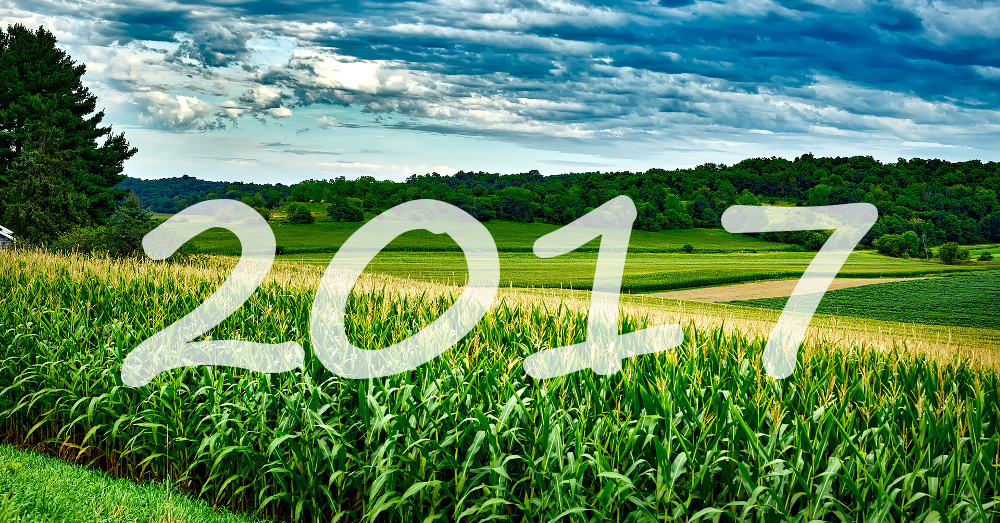The Year in Food Policy
As with every other aspect of U.S. politics and policy, 2017 brought upheaval and uncertainty to the nation’s food system.
Author: Twilight Greenaway | Published: December 28, 2017
It was a tumultuous year for food policy in the United States.
The year started off with several efforts by the Obama Administration to safeguard efforts at wide-scale food system change—such as the long-awaited formalization of new animal welfare rules in organics and the so-called “GIPSA rule,” which promised to level the playing field for small-scale meat producers in a consolidated marketplace. But once Donald Trump took office, things began to shift rapidly.
Here’s a rundown of several of the most important food policy changes that took place in 2017 (links to Civil Eats stories are in bold):
Changing Face of the USDA
Just one day before his inauguration, Trump named former Georgia Governor Sonny Perdue as the nation’s new secretary of agriculture.
At the time, food systems experts from around the nation expressed concern about Perdue’s involvement with the growth of large poultry facilities in Georgia and his overly religious approach to government, pointing to the fact that he once prayed for rain in response to drought in the state. Many also worried that Perdue and Trump’s shared anti-regulatory stance would be bad for farmers and consumers.
Then, in March, Trump proposed $21 million in cuts to the U.S. Department of Agriculture’s (USDA) budget—and some farmers protested cuts to local conservation offices.
A week after being sworn in, Perdue announced—during a visit to an elementary school in Leesburg, Virginia—that the agency would “make school meals great again” by getting rid of Obama-era school lunch standards requiring that schools serve more whole grains and less sodium, among other changes.
It soon became clear that the USDA itself was changing radically. In September, Politico reviewed the resumes of dozens of Trump agricultural appointees, and found that the president had placed former campaign workers—many of whom had no experience with agriculture, and had worked as truckers, cabana attendants, and landscapers—in the agency.
That month, Trump also nominated Sam Clovis, a birther, conservative talk-show host, and climate-change denier with no science background, to the role of chief scientist at the USDA. (Clovis withdrew his nomination in November after being linked to the current Russia investigation.)
In October, Civil Eats published a wide-ranging look at the changes Perdue had made to the USDA, including a dramatic reorganization.
In November, Vanity Fair published a detailed account of story of a group of veteran USDA scientists who had either left or been forced out of the agency over the course of the transition.
Farm Bill and Other Farm Legislation
For all the reasons above and more, concern is mounting about the 2018 Farm Bill, which has been taking shape since Congress began discussions last February.
In May, as the agriculture committees in the House and Senate began another round of farm bill negotiations, grassroots leaders gathered to discuss the people, places, and issues that have too often been shut out of funding. Some food-reform advocates have also been pushing to incentivize farms to improve their soil in the face of climate change by linking it to crop insurance, which made up a significant portion of the last farm bill.
The Supplemental Nutrition Assistance Program (SNAP), otherwise known as food stamps, and other nutrition programs account for a significant portion of the farm bill (around 80 percent of the initial projected spending in 2014). It’s also always one of the most hotly debated pieces of the legislation. This year, the House agriculture committee considered cutting soda and candy from the SNAP program, but the sugar industry invested heavily to stop it from happening.
Despite the popularity of farmers’ markets, it’s also looking unlikely that the national Farmer Markets Promotion Program (FMPP) will be prioritized in the coming bill.
In August, Oregon Representative Earl Blumenauer announced his alternative farm bill—a set of proposed legislation that he has been working with farmers, food advocates, and public health professionals to shape. The suggestions are geared toward strengthening efforts to produce healthy food, rather than animal feed and fuel.
Want to know more about how the farm bill shapes the food we eat? Civil Eats recently published an explainer from farm economist John Ikerd on Twinkies, carrots, and farm policy reality. And here’s an interview with Chellie Pingree about her plan to build a “farm bill for all.”

